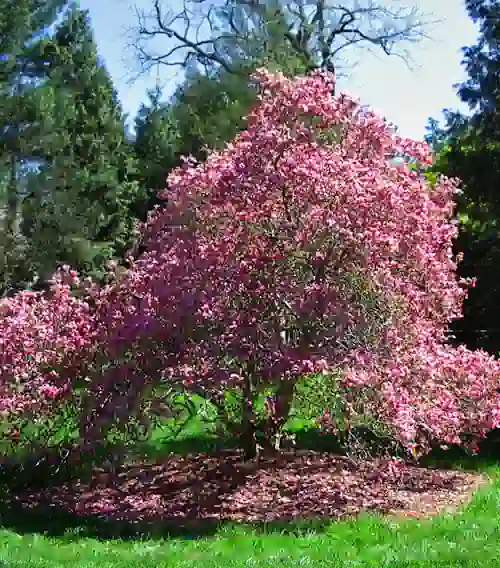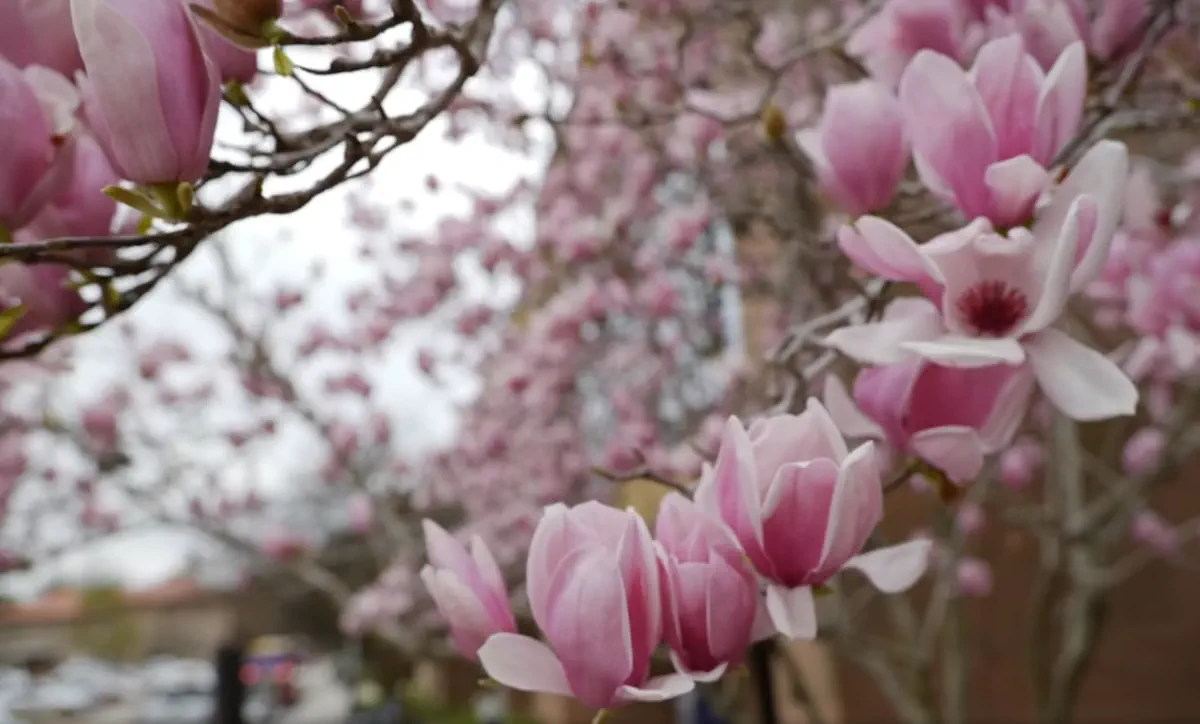Japanese magnolias, also known as saucer magnolias, are stunning ornamental trees that herald the arrival of spring with their large, showy blooms. These trees, belonging to the genus Magnolia, are hybrids primarily derived from the Yulan magnolia (Magnolia denudata) and the Lily magnolia (Magnolia liliiflora). They are cherished for their striking flowers, which can range in color from deep pink to creamy white, and their ability to thrive in various landscapes.
Typically, Japanese magnolias grow to a height of 15 to 30 feet, making them suitable for both small and large gardens. Their broad, goblet-shaped flowers bloom in early spring, often before the leaves emerge, creating a breathtaking display. This article will explore the characteristics, care, and benefits of Japanese magnolias, while also addressing common questions about their growth, light preferences, blooming frequency, and fragrance.
Characteristics of Japanese Magnolias
Japanese magnolias are deciduous trees, meaning they shed their leaves in the fall. They are known for their smooth, gray bark and simple leaves that can grow up to 6 inches long. The flowers are solitary, typically featuring six to nine petals that are mildly fragrant. These trees are not just visually appealing; they also attract various pollinators, particularly beetles, which are drawn to their pollen.
The fruit of the Japanese magnolia is an aggregate structure that matures from green to pink and eventually red. When ripe, it splits open to reveal bright red seeds, which are attractive to birds. This feature adds an additional layer of interest to the tree, extending its appeal beyond the blooming season.
How Big Do Japanese Magnolias Get?

Japanese magnolias can vary significantly in size depending on the cultivar. Most commonly, they reach heights between 15 to 30 feet, with some exceptional specimens growing even taller. The spread of these trees typically ranges from 10 to 25 feet, making them suitable for various landscape designs.
When planting a Japanese magnolia, it is essential to consider its mature size. Providing adequate space allows the tree to grow without hindrance, ensuring it can develop its full potential. For optimal growth, it is recommended to space them 15 to 20 feet apart from other trees or structures.
Do Japanese Magnolias Like Sun or Shade?
Japanese magnolias thrive best in full sun, requiring at least six hours of direct sunlight each day. However, they can tolerate partial shade, particularly in the afternoon. In shaded areas, their growth may become thin and leggy, which can affect their overall health and flowering potential.
When selecting a planting site, aim for a location that offers good morning sun and some dappled shade in the afternoon. This balance helps protect the tree from intense heat while still providing the light it needs to flourish. Proper site selection is crucial for the long-term health of the tree.
How Many Times Does a Japanese Magnolia Bloom?
Japanese magnolias typically bloom once a year, with their flowering period occurring in early spring. The exact timing can vary based on the climate and specific cultivar. In warmer regions, blooms may appear as early as March, while in cooler areas, they may not open until late April or early May.
The flowers usually last for several weeks, creating a stunning display that signals the arrival of spring. After blooming, the tree will begin to develop its leaves, which provide a lush green backdrop for the remainder of the growing season.
Are Japanese Magnolias Fragrant?
Yes, Japanese magnolias are known for their mild fragrance. The flowers emit a subtle scent that can enhance the sensory experience of spring gardens. While they do not produce nectar, their pollen attracts various pollinators, including beetles, which play a crucial role in their reproduction.
The fragrance of Japanese magnolias can vary slightly among different cultivars, but it generally adds to the charm of these beautiful trees. Their blooms not only provide visual appeal but also contribute to the overall atmosphere of a garden.
Caring for Japanese Magnolias
Caring for Japanese magnolias involves several key practices to ensure their health and vitality. Here are some essential tips:
- Planting: Choose a location with well-drained soil and full sun exposure. Avoid areas with heavy clay or overly dry conditions.
- Watering: Regular watering is crucial, especially during dry spells. Japanese magnolias prefer consistently moist soil but should not be waterlogged.
- Mulching: Apply a layer of mulch around the base of the tree to help retain moisture, regulate soil temperature, and suppress weeds.
- Fertilizing: Fertilize in early spring with a balanced fertilizer to promote healthy growth and flowering. A slow-release fertilizer with an NPK ratio of 4-3-4 is often recommended.
- Pruning: Prune Japanese magnolias after flowering to maintain their shape and remove any dead or damaged branches. Avoid heavy pruning, as these trees can be sensitive to drastic cuts.
Landscape Uses for Japanese Magnolias
Japanese magnolias are versatile trees that can enhance various landscape designs. Here are some popular uses:
- Specimen Trees: Their striking blooms make them ideal as focal points in gardens. Planting a single Japanese magnolia can create a stunning visual impact.
- Driveway Lining: Planting Japanese magnolias along a driveway can create a formal and inviting entrance to a home.
- Perennial Gardens: Smaller varieties can serve as anchors in perennial flower gardens, providing early spring color before other plants awaken.
- Shade Gardens: Japanese magnolias can also be used to create sheltered spots for shade-loving plants, enhancing the diversity of a garden.
Japanese magnolias are a beautiful addition to any landscape, offering stunning blooms, moderate size, and a mild fragrance. They thrive in sunny locations and require proper care to reach their full potential. Whether used as specimen trees or incorporated into larger garden designs, Japanese magnolias bring a touch of elegance and charm to springtime gardens. Their unique characteristics and adaptability make them a favorite among gardeners and landscape designers alike.












